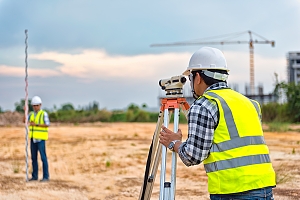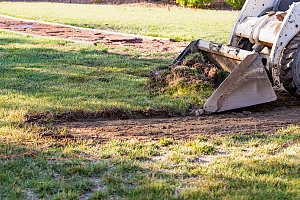A construction project involves numerous moving parts that must come together seamlessly. To ensure success, it is crucial to complete many tasks professionally and in sequence. One of the very first steps in most construction projects is site work.
But what exactly is site work? Let’s dive into the details and explore the essential steps involved in preparing the project area for construction.
Defining Site Work
 Site work encompasses various facets and involves the preparation of the project area for the commencement and completion of the construction project.
Site work encompasses various facets and involves the preparation of the project area for the commencement and completion of the construction project.
Site Grading
Creating a level area on which to construct the building is a crucial aspect of site work. This involves grading, excavation, landscape irrigation, and the installation of driveways to establish a level construction site.
Planning for a Site Excavation
Construction planning plays a key role in ensuring successful site work with excavation. The construction plans provide important information such as building setbacks, elevations, tree protection areas, erosion and sediment controls, access and entry points, as well as building layout and design.
Ground Preparation
Once the construction plans are in place, ground preparation can commence. This phase includes the removal of vegetation and clearing of the construction site. All trees, vegetation, and overburden material are removed, allowing for grading and leveling of the construction site. The leveled grade serves as the foundation for all subsequent work, and additional excavation may be required for underground spaces based on the new building layout.
Importance of Soil Compaction
 Proper soil compaction is a critical factor in site work for any construction project. It involves the correct placement of subsoil materials to provide a solid foundation for building footings and foundations. The load-bearing capacity of the soil is determined through laboratory testing, ensuring it can support the new construction work.
Proper soil compaction is a critical factor in site work for any construction project. It involves the correct placement of subsoil materials to provide a solid foundation for building footings and foundations. The load-bearing capacity of the soil is determined through laboratory testing, ensuring it can support the new construction work.
Site Grading for Stormwater Management
Site grading is essential to manage stormwater effectively. It involves the preparation of the construction site with appropriate construction bases, soil slopes, and gradations. Sloped grades allow for the proper placement of sidewalks, curbs, gutters, and parking areas. This step paves the way for landscape and garden improvements, as well as surface drainage installation.
Common Machinery Used in Site Excavation
Various types and sizes of machinery are utilized in site excavation, depending on the project’s scale. Proper machinery selection is crucial for completing construction projects efficiently and avoiding delays and increased costs. Some commonly used machines include:
- Graders
- Pan loaders
- Bulldozers
- Track loaders
- Excavators
- Dump trucks
- Screening machines
- Skid loaders
- Roller/compactors
- Front-end loaders
- Backhoes
How Dirt Connections Can Help with Site Excavation
At Dirt Connections, we understand the importance of proper site excavation and offer comprehensive assistance throughout the process. Whether it’s a commercial or residential project, our team is ready to help you. Here are some of our services that can assist you:
Reach out to us today by sending us a message online to learn more about our dependable services and how we can help you plan and execute your site excavation. Thank you for considering Dirt Connections as your trusted partner in construction projects in the Northern Virginia, Maryland and D.C. area.









































